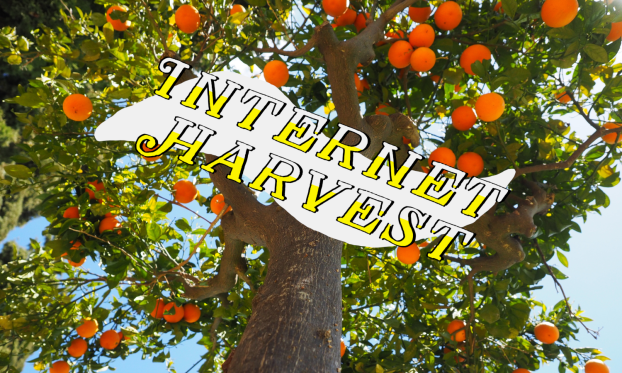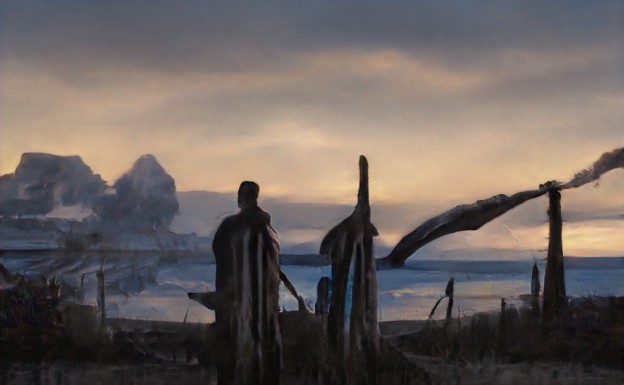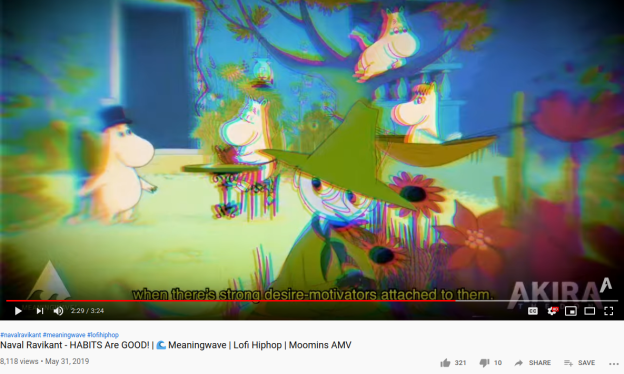Internet Harvest is a selection of the most succulent links on the internet that I’ve recently plucked from its fruitful boughs. Feel free to discuss the links in the comments.
Biosecurity
US COVID and flu website + hotline for getting prescribed paxlovid, for free, for anyone with a positive COVID test risk factors.
Register now to access free virtual care and treatment for COVID-19 and Flu, 24 hours a day, 7 days a week. Sign up anytime, whether you are sick or not.
https://www.test2treat.org/
I unfortunately had cause to use this recently, and I was struck by how easy it was – as well as the fact that I did not have to talk to anyone via phone or video call.
(It was an option, and they indicated at a couple points that a medical professional might call me if they had questions, so you should be prepared, but in my case they didn’t.) The whole thing including getting the prescription was handled over text digitally. This is fantastic.
First fatal case of alaskapox, a novel orthopox virus, in an immunocompromised patient. Orthopox is the virus group that includes smallpox, monkeypox, and cowpox. Orthopox was discovered in 2015 and seems to be spread by rodents. There have been seven total human cases so far.
The University of Minnesota Center for Infectious Disease Research and Policy (CIDRAP) has opened a Chronic Wasting Disease (CWD) Contingency Planning Project – a group of experts that are planning for the possibility of CWD spilling over into people.
I think this is a deeply important kind of project to be doing. You see this in some places in some fashion – for instance, there’s a lot of effort and money spent understanding and tracking and controlling avian influenza (a strain which has a high mortality in humans but isn’t infectious between humans, just birds – for now.) But often, this kind of proactive pandemic prevention work isn’t done, even when the evidence is there.
(I wrote about the possibility of chronic wasting disease spilling into humans a few months ago. I ended up supposing that it was possible, but looking at the infection risk posed by another spilled-over prion disease from a more common animal, BSE, it seems like the absolute risk from prion diseases that can infect humans is extremely low. I don’t think people on this project would necessarily disagree with that, but there are a lot of unknowns and plenty of reasons to take even a low risk of a highly lethal disease spillover very cautiously. Still, I’ll have to read up on it, there may well be a higher risk than I assumed.)
Related, first noticed cases of Alzheimer’s disease transmitted between people (in patients injected with human-derived human growth hormone, decades later). In a past prion post, I wrote: “Meanwhile, Alzheimer’s disease might be slightly infectious- if you take brain extracts from people who died of Alzheimer’s, and inject them into monkey’s brains, the monkeys develop spongy brain tissue that suggests that the prions are replicating. This technically suggests that the Alzheimer’s amyloids are infectious, even if that would never happen in nature.” Well, it didn’t happen naturally, but I guess it did happen. (h/t Scott at Astral Codex Ten.)
The design history of the biohazard symbol.
Other biology
“Obelisks” are potentially a completely new kind of tiny microorganism, identified from metagenomic RNA sequencing.
One of the best stories in a scientific paper is “Ants trapped for years in an old bunker; survival by cannibalism and eventual escape” by Rutkowski et al, 2016.
First of all: the discovery of ants falling into a pipe that lead to a sealed bunker in Poland. Once inside, the ants couldn’t climb back out. There were no plants or other life in the bunker, so the ants survived on other organisms that that fell into the bunker, including eating their own dead (which they wouldn’t normally do, but if you’re in a tight spot, like an unused former nuclear weapons bunker, calories is calories.)
Second: after studying how they lived, the scientists tried transporting a small group of Bunker Ants to the surface to make sure they wouldn’t immediately behave in some kind of abnormal destructive way toward surface ants.
Then, when they didn’t, the scientists – in what I see as a breathtaking act of compassion – installed a plank into the pipe, so that the Bunker Ants could climb out of the bunker and be on the surface again.

NEW DEEP SEA ANIMALS LOCATED. Listen. I’ve written about this before – I know so much about the weird little women of the deep ocean and still every time I learn some more there are NEW STRANGER WOMEN DOWN THERE. This is also true of all of humanity learning about the deep ocean I guess. You simply cannot have a beat on this place.
Other bad things
A Hong Kong finance worker joined a multi-person video call where all his colleagues’ videos and their voices were deepfakes. It was a scam and the worker was tricked into transferring them millions of dollars. So that’s a thing that can happen now!
Bellingcat’s investigation into a tugboat spilling oil off the coast of Tobago. (The first piece is linked, there have been more updates since.) I love Bellingcat; I’ve talked about this before. My reaction to keeping up with this series is equal parts “those wizards have done it again” and “there be some specific-ass websites in this world.”
…But when there’s not detailed public-facing information about something, you can make your own, as shown by volunteers tracking ICE deportations by setting up CCTV facing Boeing Field in Seattle and showing up weekly to watch the feed and count how many chained detainees are boarded onto planes. This is laudable dedication.
Do you have an off-brand video doorbell? Get rid of it! They’re incredibly insecure. They aren’t even encrypted. If you have an on-brand video doorbell, maybe still get rid of it, or at least switch it to using local storage. At least, Ring has been ending the thing where they make it easy for police to get footage without warrants, but there are other brands that might have different systems and if you ask me it’s pretty bad that they had that in the first place. (H/t Schneier on Security)
You know who is giving police sensitive customer personal information without warrants? Pharmacies! Yikes! (Again, h/t Schneier on Security)
Other interesting things
Mohists as early effective altruists? Ozy at Thing of Things writes about the Mohist philosophy of ancient China. I knew a little bit about this, but learning more it’s even cooler than I thought, and the parallels to modern rationality are surprising.
MyHouse.WAD is a fan-created map for the video game “Doom” that turns promises to be a map of a childhood home and turns into an evocative horror experience. I don’t know anything about Doom, so I’ve only experienced it in the form of youtube videos about the (real! playable!) map. You also don’t need to know anything about Doom to appreciate it. Power Pak’s video “MyHouse.WAD – Inside Doom’s Most Terrifying Mod” is the most popular video and for good reason.
If you liked that, you may also enjoy Spazmatic Banana’s “doom nerd blindly experiences myhouse.wad (and loses his mind)” (exactly what it sounds like) as well as DavidXNewton’s “The Machniations of myhouse.wad (How it works)” series (which, as it sounds like, explains how the map works. Again, well explained if you do not know a thing about Doom modding.)
The earliest ARG began in the 1980s at the very beginning of the internet age and is based around a supposed research project that made a dimensional rift in the (real) ghost town of Ong’s Hat, New Jersey.
The world’s largest terrestrial vehicle is the Bagger 293, an otherworldly-looking machine that scrapes up topsoil for digging mines.

A cool piece on the woman who won the “Red Lantern” award for coming in last in the 2022 Iditarod. (H/t Briar.)
Hilariously, she wrote on Twitter:
A short story: The Mother of All Squid Builds a Library. (H/t Ozy.)
Kelsey Piper’s piece on regulations and why it’s good that the FAA lets parents on airplanes carry babies in their lap, even though this is known to be less safe in the event of plane accidents than requiring babies to have their own seats.






